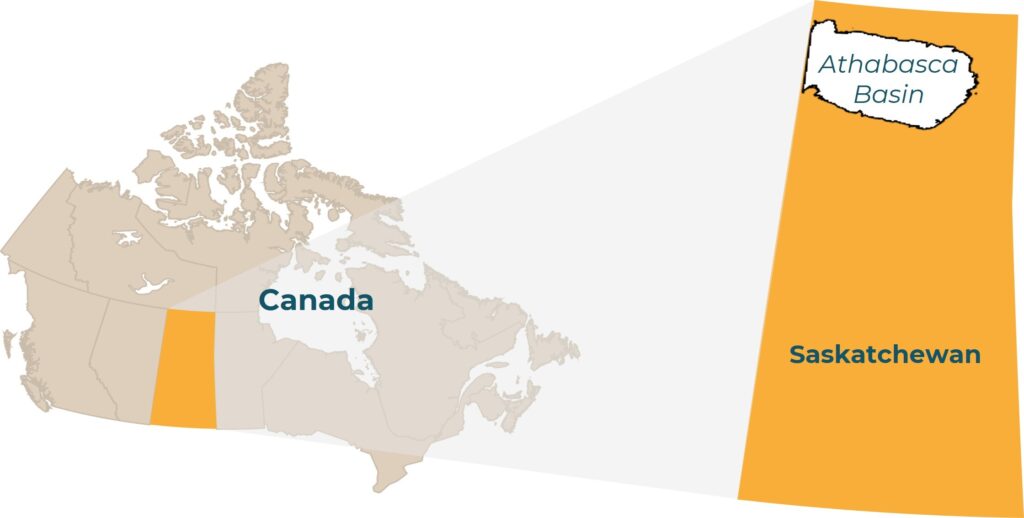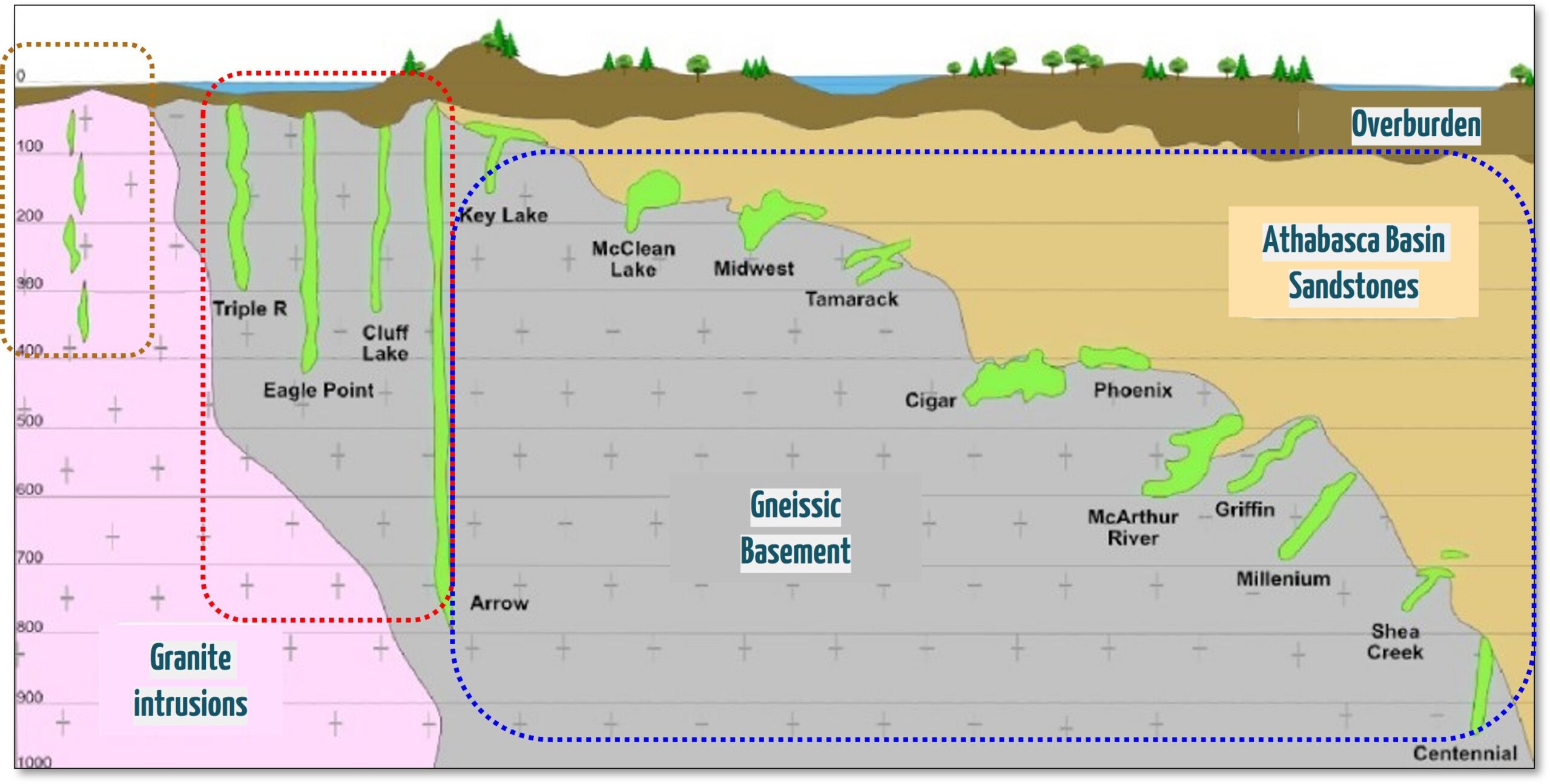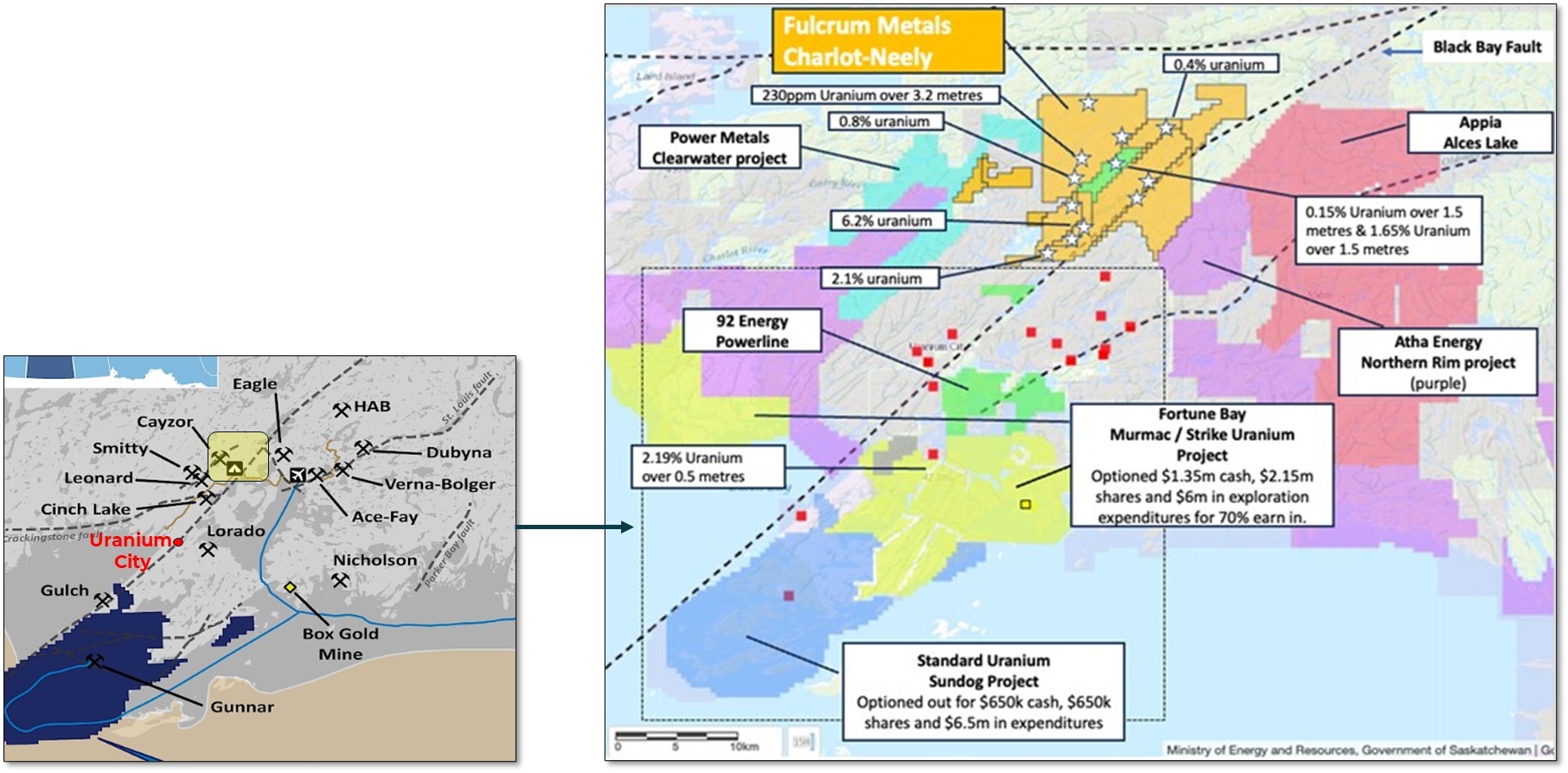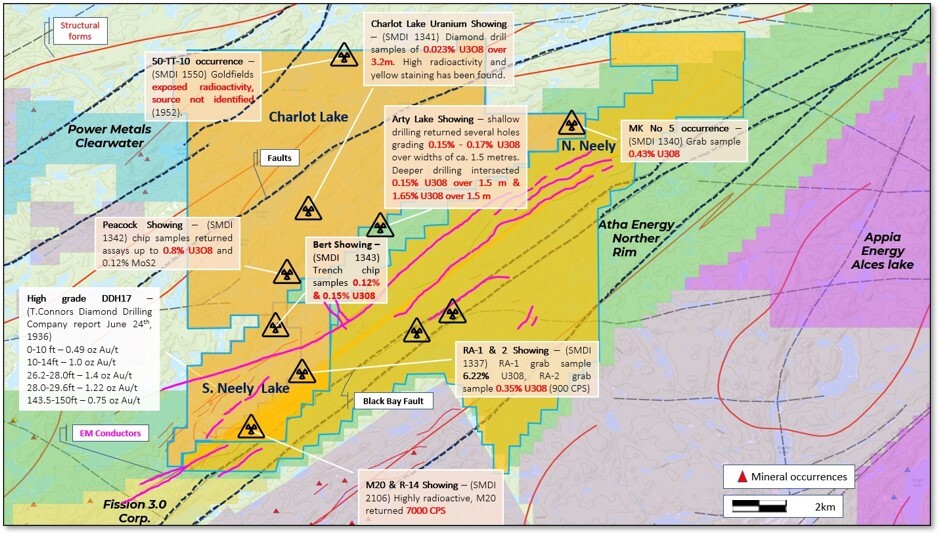Athabasca Basin (Canada)
Ownership
Fulcrum Metals plc. (100% optioned by Terra Balcanica Resources Corp.)
Area
596 km2
District
Athabasca Basin (northern Saskatchewan, Canada)
Deposit Type
Basin and Beaverlodge District style uranium deposits, shear hosted gold, VMS, Ni-Cu-(PGE)
Commodities
U, Au
Status
Airborne geophysics and field mapping / drill targeting (Q2-Q3 2024)
About Athabasca District Project
Terra Balcanica’s 600 km2 optioned licence clusters straddle the norther and southeastern edges of the world-famous Athabasca Basin uranium district in northern Saskatchewan, a premium mining district and leading global source of high-grade uranium.
The flagship Charlot-Neely Lake licence is located on the northwestern side of the Basin within the emerging Uranium City district. It straddles ca. 20 km of the strike length of the Black Bay Fault, a major NE-SW trending structural corridor that penetrates the basin itself. It is one of the few first order structural control for basement-hosted uranium mineralization whereby such linear conductors tend to contain graphitic horizons as important reductants for uranium-bearing fluids.
Charlot-Neely Lake benefits from work completed in 2023 which confirmed multiple uranium anomalies and surface mineralization of up to 0.55 % U along extensive zones of high CPS (counts per second) radioactivity. Here, historic mineralization occurrences of up to 6.22 % U3O8 were noted along with gold drilling results of 3.91 g/t Au over 45.8 m from surface.
Previous work at Snowbird, Fontaine Lake and S. Pendleton clusters of licences has also demonstrated evidence of uranium mineralization along favourable structural trends with prospective target horizons based on electromagnetic conductors. Future exploration by Terra Balcanica will feature airborne EM and gamma ray surveys followed up by detailed structural, mapping, and both RC and stream sediment sampling work to rapidly define primary drill targets.
Athabasca Basin
- Home to some of the largest and highest-grade uranium deposits in the world;
- Northern Saskatchewan supplies ca. 20% of the world’s uranium;
- Recent discoveries attracting significant investment:
- Arrow discovery (4.3 Mt at 0.83% U3O8)1
- Triple R discovery (2.7 Mt at 1.94% U3O8)2
- Athabasca uranium discoveries have proved the concept exploring along fluid bearing structure outside the basin.
1 Using the highest grade of notable mines in each country; The 10 biggest uranium mines in the world; Mining technology
2 https://world-nuclear.org/information-library/country-profiles/countries-a-f/canada-uranium.aspx

Geological model
Terra Balcanica targets two uranium styles of mineralization:
Beaverlodge style uranium deposits:
- Vein-hosted and located near-surface;
- Hosted by structures within granitic intrusions;
- Magnetic and radiometric anomalies with conductive corridors.
Basement hosted uranium deposits:
- Structurally-controlled and characterized by high-grades within the (ortho- and para-gneissic) crystalline basement;
- Close to the margin of the Athabasca Basin;
- Recent significant discoveries by NexGen Energy and Fission Uranium.

Charlot-Neely Lake
- 160 km2 of land tenure within 10 km radius of 14 past ore producer;
- Covers 20 km of the Black Bay fault with 16 km of historic linear graphite (EM) conductors;
- Multiple anomalies of up to 7,000 cps and historic rock chips of up to 6.22 % U3O;
- 0.8% U3O confirmed at Peacock showing in 2023;
- Historic 3.91 g/t Au over 45.8 m from surface (DDH17 ).


Fontaine Lake – Snowbird
- Location: straddles the Grease River Shear Zone and sub faults as well as the Snowbird Tectonic Zone;
- CanAlaska completed minimal program at Fontaine Lake in 2008 with further work recommended;
- The Black Lake Shear Zone can be traced for 200 km across the Athabasca Basin and is associated with Cameco’s Centennial deposit (up to 33.9 m @ avg. 8.78% U3O8);
- Cora and Legs Lake Shear Zones have multiple airborne U anomalies not followed up on trend with several projects to the south;
- Haymac Mines restarted mining at Nisto in 1958 and shipped 500 tons of high-graded ore to Uranium City with one shipment of 106 tons grading 1.6% U3O8.


